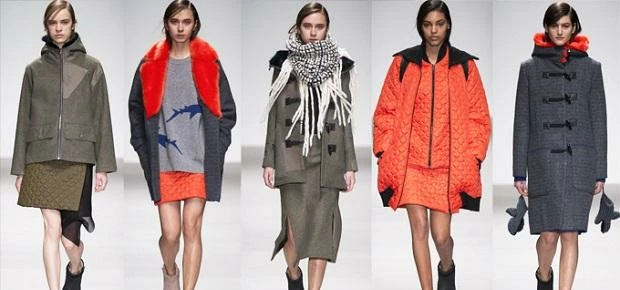
Member Article
The Logistics of Fashion: Stitching the world together
The value and prestige of the UK’s fashion industry is not to be underestimated. It is one of very few resilient sectors to have fared well during the recession, emerging stronger than ever in 2014 to contribute £26billion to the British economy.[1] Coupled with fashion and apparel’s combined support for supply chain industries this figure has increased by over 20 per cent in the past five years[2].
Significant growth in retail e-commerce has served to boost business on home soil as well as strengthen the UK’s relationship with overseas consumers, culminating in £800million worth of exports each month[3]. This “fast fashion” requires flexibility in the supply chain to deliver quality at an affordable price, yet the complexities involved in the “logistics of fashion” are often downplayed. The sourcing or import of raw material has to be considered first, followed by decisions concerning lead times and development calendars, then the manufacturing process itself, with delivery and distribution – complete with customs navigation – finalising the chain.
To help, FedEx has put together its top five tips on fashion and textile exporting, offering best practice advice and guidance to make the most of international opportunities.
1. Take global expansion one step at a time
As Fashion Week season approaches, the world’s eyes will be firmly fixed on Great Britain, and with 65% of international consumers actively seeking out British goods online when internet shopping[4], therein lies great opportunities to reach new customers. However, there is no such thing as a “one size fits all” strategy when looking to enter multiple overseas markets. Each one has its own customs, regulations and code of etiquette – all of which has to be navigated appropriately. In preparing for Fashion Week season, your export strategies for New York, Milan and Paris should all vary, taking into account the different rates and restrictions for each country.
2. Do your research
Charges can apply when transporting apparel at both the point of export and the point of import into the destination country. It is important that you are aware of the transaction costs involved at both sides and can plan accordingly. Remember, other EU countries are widely regarded as being easier to trade with compared to countries outside the EU, as the goods are in free circulation[5]. By being part of a Customs Union, the UK benefits from restriction-free trade with other EU countries. If you are exporting clothing to the EU that has been processed from imported EU raw materials or goods, you may also be able to obtain additional relief from customs duties. Consider where your goods are made and how much is EU origin, as you may get duty relief from other “preference-giving” countries outside of the EU that favour imports from this area.
3. Be aware of customs challenges
The transportation of clothing, requires specific restrictions that need following. Firstly, a business needs to detail the gender for which the garment is designed as this will impact on the duty rate when transporting across borders. You will also need to have correct accompanying documentation detailing whether the goods are knitted or woven, in addition to their fabric content in percentage by weight. The country of manufacture also needs to be divulged with some countries, namely the US, requiring the manufacturer to be identified via a code or the manufacturer’s full name and address.
4. Keep clear on cost for good customer service
Larger companies have been known to absorb customs charges; keeping delivery prices to a minimum and customers happy. Working closely with your logistics provider to make sure parcels come complete with the correct shipping documentation will help you navigate what can be a tricky process. Make sure any clothing or raw materials are labelled in line with the Harmonised Coding System which classifies traded products with names and numbers to ensure quick and easy customs clearance.
5. Be realistic about what you can offer
The size of the UK means you can pretty much guarantee next day delivery nationwide, but getting your product into far-reaching countries safely and securely will arguably take more time. As the industry continues to grow, we are seeing increased demand on the fashion supply chain as brands compete with each other to get their products from catwalk to customer as quickly and efficiently as possible. Speak to your logistics provider who can advise on likely delivery times based on individual country tariffs and border requirements. The UKTI is also an invaluable source of information for commodity codes and other measures applying to exports using its free online UK Trade Tariff.
For the thousands of people attending this year’s Fashion Week shows, the majority will not fully appreciate the lengths taken and miles travelled to get the clothes ready for public display. In an industry where as much as 80% of a business’ total expenditure goes into the supply chain[6], agile distribution is critical. Whether transporting apparel for an event of this nature or to retailers around the world, partnering with a trusted logistics provider should be a top priority for those in the industry looking to capitalise on global opportunities. At London Fashion Week alone, shows are streamed live to 160 countries worldwide and over £100 million worth of orders placed[7]. With such big business readily available for those that have the right logistics support behind them, considering some of our advice points will ensure budding designers and brands make a truly global fashion statement all year round.
A great example of an SME which is flourishing beyond its own border is Wool and the Gang, an established Fashion Week star, which is taking its designs from catwalk to customer as efficiently as possible.
[1] London Fashion Week, February 2014
[2] London Fashion Week, February 2014
[3] guardian, June 2014
[4] Drapers, July 2014
[5] Gov.uk, June 2013
[6] Deloitte, Autumn/Winter 2014
[7] London Fashion Week, February 2014
This was posted in Bdaily's Members' News section by David Poole .



 How advancements in technology are shaping the future of the economy in North East England
How advancements in technology are shaping the future of the economy in North East England
 South Yorkshire Craftsmanship and Innovation: A Tale of Heritage and Growth
South Yorkshire Craftsmanship and Innovation: A Tale of Heritage and Growth
 Demystifying Degree Apprenticeships
Demystifying Degree Apprenticeships
 Industry-focused apprenticeships pave the way for a bright future in science manufacturing
Industry-focused apprenticeships pave the way for a bright future in science manufacturing
 What’s the best hosting plan for a business website?
What’s the best hosting plan for a business website?